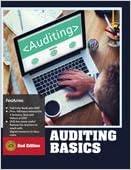Question
11.Under the periodic inventory system the truth is it: A-Gross sales in being diminished by sales returns and allowances and cash discount on sales to
11.Under the periodic inventory system the truth is it:
A-Gross sales in being diminished by sales returns and allowances and cash discount on sales to get net sales. Thus net sale in being decreased by cost of goods sold to get the gross profit. The cost of goods sold is at the same time the difference between merchandise at the beginning of the period increased by the total cost of merchandise acquired and this being diminished by merchandise at the end of the period B-Gross sales in being diminished by sales returns and allowances and cash discount on purchases to get net sales. Thus net sale in being decreased by cost of goods available for sale to get the gross profit. The cost of goods available for sale is at the same time the difference between merchandise at the beginning of the period decreased by the total cost of merchandise acquired and this being increased by merchandise at the end of the period C-Gross sales in being diminished by purchase returns and allowances and cash discount on sales to get net sales. Thus net sale in being decreased by cost of goods sold to get the gross profit. The cost of goods sold is at the same time the difference between merchandise at the end of the period increased by the total cost of merchandise acquired and this being diminished by merchandise at the beginning of the period
12.What does the long term liability constitute:
A-Resources expected to be turned into cash, sold or consumed over one year from the date of the balance sheet B-Long term obligations up to one year - obligations to make some payment in the future or to deliver some goods or services in the future. C-Long term obligations over one year - obligations to make some payment in the future or to deliver some goods or services in the future.
13.Collection agency
A-A collection agency usually earns a fixed premium of the funds or assets it recovers for the borrower. Some collection agencies will actually sell the debts from the borrower at a discount, in which case the collection agency pays the full amount of whatever owed funds it manages to collect. Unless a collection agency has won a lawsuit against a borrower, it can't legally seize cash from a borrower or physically harm or threaten a borrower to make payment. B-A collection agency usually earns a percentage of the funds or assets it recovers for the lender. Some collection agencies will actually purchase the debts from the lender with a premium, in which case the collection agency receives the premium for collection of money. Unless a collection agency has won a lawsuit against a debtor, it can't legally seize liabilities from a debtor. C-A collection agency usually earns a percentage of the funds or assets it recovers for the lender. Some collection agencies will actually purchase the debts from the lender at a discount, in which case the collection agency receives the full amount of whatever owed funds it manages to collect. Unless a collection agency has won a lawsuit against a debtor, it can't legally seize assets from a debtor or physically harm or threaten a debtor to make payment.
14.Prepaid Interest, prepaid rent, prepaid expenses there is an example of:
A-Deferred expenses which means that they are cash inflows for services received in the past a claim for delivery and adjustments are made to bring each liability account up to date at the end of the accounting period before preparation of the financial statements. B-Deferred expenses which means that they are cash outflow for services to be received in future a claim for delivery and adjustments are made to bring each accrued expense account up to date at the end of the accounting period before preparation of the financial statements C-Short-term Liability, shorter advanced collections for services to be rendered in the future; an obligation to deliver/render and adjustments are made to bring each liability account up to date at the end of the accounting period before preparation of the financial statements
15.For the income statement, the truth is:
A-Revenues are the amount of cash flows received in exchange for the delivery of goods or services to suppliers and expenditures are measures of the cash outflow that a company transfers to a customer or consumes in order to deliver goods or services to a customer. B-Revenues are the amount of assets received in exchange for the delivery of goods or services to customers and expenses are measures of the assets that a company gives up or consumes in order to deliver goods or services to a customer. C-Revenues are the amount of cash outflows paid in exchange for the delivery of goods or services to the company and expenses are measures of the cash inflow that a company gets from a customer or consumes in order to deliver goods or services to a customer.
Step by Step Solution
There are 3 Steps involved in it
Step: 1

Get Instant Access to Expert-Tailored Solutions
See step-by-step solutions with expert insights and AI powered tools for academic success
Step: 2

Step: 3

Ace Your Homework with AI
Get the answers you need in no time with our AI-driven, step-by-step assistance
Get Started


